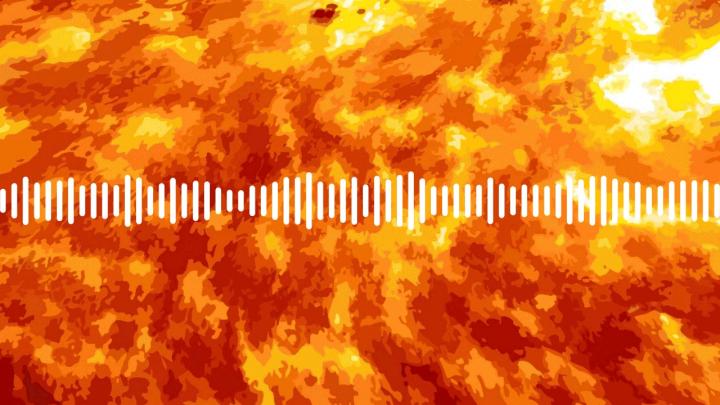Sounds of the Sun

An illustration of a sunspot inspired by imagery from NASA's Solar Dynamics Observatory (SDO), with a stylized sound wave superimposed. View animation: https://svs.gsfc.nasa.gov/vis/a010000/a013000/a013011/sunspot.gif Credit: NASA's Goddard Space Flight Center
This sound helps scientists study what can't be observed with the naked eye.
“Waves are traveling and bouncing around inside the Sun, and if your eyes were sensitive enough they could actually see this,” said Alex Young, associate director for science in the Heliophysics Science Division at NASA's Goddard Space Flight Center in Greenbelt, Maryland.
Data from SOHO, sonified by the Stanford Experimental Physics Lab, captures the Sun's natural vibrations and provides scientists with a concrete representation of its dynamic movements.
“We don't have straightforward ways to look inside the Sun. We don't have a microscope to zoom inside the Sun,” Young said. “So using a star or the Sun's vibrations allows us to see inside of it.”
These vibrations allow scientists to study a range of complex motions inside the Sun, from solar flares to coronal mass ejections.
“We can see huge rivers of solar material flowing around. We are finally starting to understand the layers of the Sun and the complexity,” Young said. “That simple sound is giving us a probe inside of a star. I think that's a pretty cool thing.”
The sounds of the Sun are on display at the NASA Goddard Visitor Center in Greenbelt, Maryland. An immersive art installation, called Solarium, uses vivid imagery and sonification to transport listeners to the heart of our solar system.
Media Contact
More Information:
https://www.nasa.gov/feature/goddard/2018/sounds-of-the-sunAll latest news from the category: Physics and Astronomy
This area deals with the fundamental laws and building blocks of nature and how they interact, the properties and the behavior of matter, and research into space and time and their structures.
innovations-report provides in-depth reports and articles on subjects such as astrophysics, laser technologies, nuclear, quantum, particle and solid-state physics, nanotechnologies, planetary research and findings (Mars, Venus) and developments related to the Hubble Telescope.
Newest articles

Sea slugs inspire highly stretchable biomedical sensor
USC Viterbi School of Engineering researcher Hangbo Zhao presents findings on highly stretchable and customizable microneedles for application in fields including neuroscience, tissue engineering, and wearable bioelectronics. The revolution in…

Twisting and binding matter waves with photons in a cavity
Precisely measuring the energy states of individual atoms has been a historical challenge for physicists due to atomic recoil. When an atom interacts with a photon, the atom “recoils” in…

Nanotubes, nanoparticles, and antibodies detect tiny amounts of fentanyl
New sensor is six orders of magnitude more sensitive than the next best thing. A research team at Pitt led by Alexander Star, a chemistry professor in the Kenneth P. Dietrich…





















